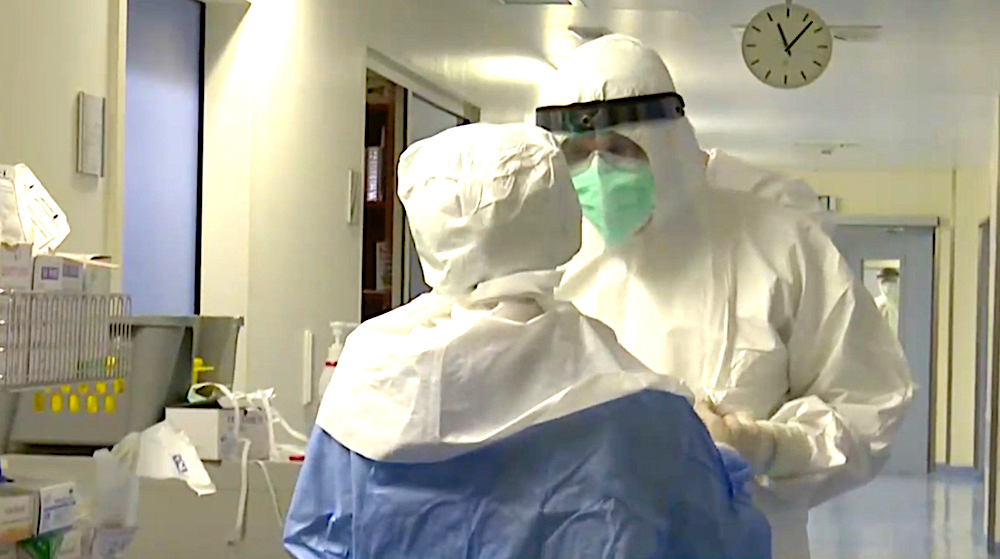 The ongoing research collaboration between researchers from the University of Western Attica (UniWA), International Hellenic University (IHU), Aristotle University of Thessaloniki (AUTH), and the University of Balearic Islands (UIB) on a new epidemiological model based on self-organized criticality (SOC), has recently produced new significant results regarding the COVID19 pandemic.
The ongoing research collaboration between researchers from the University of Western Attica (UniWA), International Hellenic University (IHU), Aristotle University of Thessaloniki (AUTH), and the University of Balearic Islands (UIB) on a new epidemiological model based on self-organized criticality (SOC), has recently produced new significant results regarding the COVID19 pandemic.
In these days of extreme epidemic situations, the value of this research is highlighted given the debate at all levels, scientific, social, and mainly political, worldwide, on significant issues such as the effectiveness of social distancing measures, vaccination, even the ‘herd immunity approach’.
A model simulating the dynamics of viral epidemics spread over a population, derived from the Statistical Physics of Critical Phenomena, is proposed. The model is capable of distinguishing viruses based on their aggression and treats the state of epidemic spread as a self-organizing system; an approach that applies to natural systems. This self-organizing feature originates from the complexity demonstrated by the system. When released without any restrictions (the ‘herd immunity’ approach), the epidemic spread is smooth and its duration short, only if the virus has no characteristics of increased aggression. Otherwise (aggressive viruses) the system can be driven into uncontrolled situations in terms of high percentage of active, infected population, and most importantly in terms of an extended duration of the epidemic.
The study focused on the case of aggressive viruses such as COVID-19 and highlighted with quantitative documentation, among others, the following:
• The spread of such a viral epidemic, can NOT happen in usual and safe rates. This is due to the critical point of the control parameter, which has a particularly low value. Consequently, in such cases the ‘herd immunity’ approach leads directly to an extensive and prolonged spread of the epidemic.
• The only way to control the epidemic both in terms of active cases and reduced duration, is social distancing, limiting physical contacts. This together with vaccination is proved to intervene in the formulation of the critical value of the control parameter of the system.
Regarding social distancing measures, these should concern:
– Isolation of the population (closed system) either at state level or at a lower level (fragmentation). In the case of fragmentation, the closed subsets must not be too small to avoid accompanying phenomena, such as the tendency to increase fluctuations and the average value of the proportion of the diseased.
– Drastically restrict physical contacts within the population. In this study, when this limitation was identified at 75% (a percentage that is also approached in real-world conditions), next to the decrease in the number of diseased, a significant decrease in the maximum duration of the epidemic by about 30 times, emerged.
Verification of the proposed model in the case of many European countries with different approach in dealing with the pandemic, reinforces the view that the approach of the restrictive measures implemented in a timely and consistent way is not only in the right direction, but rather also necessary.
The scientific articles that have so far emerged from this research activity can be found in the following links:
1. https://doi.org/10.3390/ijerph17186525 (International Journal of Environmental Research and Public Health)
2. https://doi.org/10.1063/5.0046772 (Chaos: An Interdisciplinary Journal of Nonlinear Science)
This research team is consisted by:
Yiannis Contoyiannis, Pericles Papadopoulos and Stelios Potirakis, from the University of West Attica, Greece.
Stavros Stavrinides and Michael Hanias from the International Hellenic University, Greece.
Myron Kampitakis from the R&R of the Hellenic Electricity Distribution Network Operator, Greece.
Rodrigo Picos, from the University of Balearic Islands & the Balearic Islands Health Research Institute, Spain.
Efstratios Kosmidis from Aristotle University of Thessaloniki.











